What follows is the unabridged version of my latest post on TechCrunch, “Is Twitter the CNN of the New Media Generation?“
This past weekend the Twitterverse spoke-out in exasperation and opposition against traditional media networks (CNN specifically) and the absence of instantaneous coverage of the Iranian election and the resulting fallout. “We the people” wanted real-time information regarding the violent protests that erupted on the streets of Iran and the stories probing potential foul play in the results. We took to Twitter to express discontent and to also uncover the real story as it was unfolding live through citizen journalism.
The world was watching…and it did so on Twitter and not CNN or any other news network.
At the 140 Characters Conference (#140conf) in New York, Robert Scoble hosted a fervent discussion with social media-savvy traditional news personalities to explore how Twitter was transforming the process of news gathering and lead sourcing. Joining Scoble was Ann Curry (@AnnCurry) – News Anchor on NBC’s Today Show and host of Dateline NBC, Rick Sanchez (@ricksanchezcnn) – host of the 3PM weekday edition of CNN Newsroom, Ryan Osborn (@todayshow) – producer, NBC Today Show, and Clayton Morris (@claytonmorris) – anchor, Fox News.
In the case of Iran’s election, Twitter once again served as the lifeline to news and information related to a monumental and historical event.
Conference organizer Jeff Pulver calls this the era of “now” media fueled by new and social media and the people who power Twitter and other popular networks. The pursuit of “now” is conditioning us to expect information as it happens, whether it’s accurate or developing.
The question is, how will this latest example of community-powered news consumption and distribution effect how traditional news organizations gather and report on news.
Robert Scoble said of his inspiration for the session, “I wanted to learn more about the election in Iran and the crisis and the violence that was spilling onto the streets. I couldn’t find anything on CNN. In fact, all I could find was Larry King talking to motorcycle mechanics.”
His frustration was also shared by many, which served as the groundswell for the powerful Twitter storm that ensued.
If we reflect upon the words shared by Twitter creator and co-founder Jack Dorsey in his morning keynote, “Twitter is about approach, transparency, and immediacy.”
If media is fragmented and distributed, perhaps what we’re now witnessing is that the framework for publishing and monetizing news is physically and financially constraining and choking its ability to evolve and adapt in “Twitter time.”
Dorsey’s words will continue to ricochet in the conference rooms of newsrooms and offices unable to find resonance with executives and producers who are responsible for leading change in this dire economic climate.
Rick Sanchez passionately expressed his frustration associated with his fixed time schedule for reporting news. As an avid user of Twitter, he also acknowledged that things have to adapt, “Is news judgment changing? Yes!”
“This is the first time where we can connect directly with citizens who could be a reliable source aside from the talking heads and pretty faces that serve as news anchors,” he continued.
Even though he caught himself from elaborating on that controversial portion of an otherwise interesting comment, the crowd still rightly booed and hissed in response.
While he’s partially correct about Twitter serving as the catalyst for the evolution of news judgment and connecting directly with citizens, the methodology associated with embracing Twitter or Social Media in general is actually in direct response to its insurgence and the competitive threat it represents. Media is reacting simply because of the authority associated with Twitter and other emerging social networks.
Ann Curry cleverly countered, “While I may not be another ‘a pretty face,’ we have to look at whether or not mainstream media is covering the world fast enough and the answer is no.” She then concluded, “Should we be? Yes. But, right now, we can’t keep pace.”
She’s right.
News media can’t keep pace with the new world of media consumption and the insatiable appetite for information – especially when it has yet to understand the true promise and opportunity that Social Media represents. This isn’t about adapting an existing model to new, popular broadcast channels. It’s about expanding and forcing a fundamental renaissance within the news machine itself—transforming and creating how these media giants can monetize new streams and platforms.
Ann also echoed Dorsey’s tenant of approach, “With social media, we can empathize with our subjects in order to see and report on a story truthfully.”
Her next statement made us stop and reflect, to which she earned enthusiastic applause, “My mandate for news teams is that I want them to shoot every story like it’s about their mother, brother, sister, father, and cousin. Tell it that way. That’s the road to clarity, truth, understanding and fully becoming global.”
It celebrates not only the foundation for exceptional journalism, but also the spirit of social media.
It’s about real people.
It’s about emotion.
It’s about empathy.
News is global and Twitter is one of the leading social networks that connects us to other human beings through the stories that affect them, us.
Clayton Morris of Fox News injected reality into the discussion and emphasized a point that underpinned Andrew Keen’s highly debated book, “The Cult of the Amateur.” “There’s a tipping point right now with new, traditional, and social media. It’s conversation versus fact checking. No one has answers to where this convergence is leading,” he exclaimed.
Fact checking is a vital part of the news business and is ultimately what separates amateurs from experts. But researching fact from hearsay or even opinion is almost impossible on Twitter for most users.
Keen believed that citizen media is corrupting the very institution of news media because most of the individuals publishing information using social tools, according to the book, are “grossly misinformed,” he argues. While Morris didn’t make the sweeping assertion that Keen expressed, his point is noteworthy and deserves further examination.
But, we have the power as consumers to also become informed fact checkers to intelligently sort fact from fiction.
Perhaps however, what Twitter represents has less to do with the integrity of information and more to do with the culture it’s defining. As I wrote in a previous post, Can the Statusphere Save Journalism, “What eludes publishers is the very thing that can save them: the new model for not only surviving the evolution, but also thriving in the future ecosystem of publishing and connecting content with audiences—where they congregate online. The new media economy will embrace a shift in content creation and revenue generation from a top-down model to a bottom-up groundswell.”
This is particularly significant as it starts to redefine the parameters and platforms for creating and distributing information and in turn, monetizing that content.
Scoble again asked, “Where was CNN on that day, at that time?”
Rick Sanchez, responded, “We had people in Iran watching the events unfold, live. Our people were tear-gased. We were there.”
And here’s my point as stated by Scoble in response to Sanchez, “How would we know that? Why didn’t you share that side of the story with us as it was happening? You couldn’t because your show wasn’t on!”
Curry agreed, “There are other stories that are important for people to hear, but don’t make broadcast.”

This is true. We are seeking more human stories and aspects of news that connect with us as individuals. However, these other stories don’t necessarily fall within formulas and packages that represent sellable or subsidized media products.
Curry demonstrated the opportunity for media to create entirely new channels that augment traditional news reporting, “I learned about the last missile test in North Korea on Twitter. I turned on the TV and no one was reporting the story. I thought to myself, ‘this sucks.’ So, I jumped on Twitter and reported the facts as I found them in real time.”
As her story continued, she also unearthed one of the factors in why traditional media is hesitant to expand participation and engagement through social channels, “I had to be careful however. I was receiving reactions and questions. The trick is communicating solid information without misleading anyone. One word can change how people interpret anything. I feel a great obligation to never twitter something that is wrong.”
Credibility counts for everything and as Curry noted, “once you lose that, you’ve lost.”
Fear is an obstruction. Guidance and experience is the only way to establish the rules of engagement in order to cultivate a vibrant, monetizable community associated with these promising new channels for mainstream and unpublished content.
The panel then traversed into a tense, but necessary discussion of traditional journalism versus citizen media. Now the audience was involved and outbursts and comments were escalating.
Curry captured the essence of the debate by shedding light on the middle ground that exists between traditional and new media producers, “Judgment is not taught in ‘j’ school. Judgment is learned. Judgment has to change with the times.”
As she observed, reporting news is a service job and also a business. But ultimately, reporters and bloggers serve the people.
The session went into overtime and continued to explore this new ecosystem where traditional media, new media, and citizens could create a valuable and collaborative ecosystem.
In the end, conviction, passion, investigation, accuracy, diligence, and striving for truth are the attributes of any good journalist or blogger. Crusading for higher standards in reporting and championing them into creating and growing new channels represents our collective crusade.
In revisiting Dorey’s keynote, he also spotlighted “transparency.”
Understanding who we’re trying to reach and how they discover and share information not only makes us as content creators and story tellers and participants more empathetic, but it also inspires sincerity and a genuine approach to what we say and how we say it.
As each panelist professed, it is this transparency that is missing from so many media organizations as it’s deeply misunderstood and underestimated.
Sanchez observed the lack of transparency across Twitter and media in general, “I’m bothered by people who use Twitter as shtick and people who think they’re going to change the world just because they’re using it. The race with Ashton, news teams that ‘go to the twitter boards’ while on TV to see what’s happening, it all seems contrived, like they’re trying to be part of the community, but instead they’re cheapening it.”
Curry jumped in and held nothing back, “Here’s what’s pissing me off. The reason I fight to go to places that are struggling and in need of help is to tell these stories, to get to the truth and to get people to care!”
Clayton added, “There are old parts of new media that they [publishers and broadcasters] are comfortable with and aspects of new media that represent new ways to seem like they ‘get it.” It all feels disingenuous though. Somewhere in the middle is the future. There was a point where fax bulletins were part of the breaking story.”
Sanchez quipped, “Companies that don’t assign managers for social media will fail!”
Ultimately the panel and audience agreed that strong passionate journalism was needed now and that Twitter and social media represent a new, powerful platform to broadcast news, crowdsource leads and stories, and expand the media’s role and earned relevance in the new age of media.
If you can’t get it on the air or in print, use Twitter, blogs, and social networks to get information out there.
Curry declared, “My [Twitter] followers give me a newspaper to publish stories I care about. We have a responsibility to not only tell stories for financial gain, but we need to publish information that people need to know.”
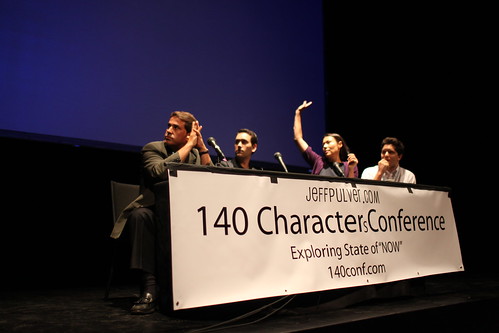
What people want to know versus what they need to know however is at the heart of why this panel was organized in the first place and why there will be many other discussions just like it.
Who’s to say what “we” want or need to know?
The answer is all of us.
As a community, we wield power that the media has yet to fully grasp and holistically embraced. Traditional media as an industry, one that is represented by individuals for individuals, is not largely part of the community it wishes to serve. Instead it uses these tools mostly as extensions of their broadcast network.
For some, on the other hand, Twitter and social media helps create a more “media-literate” society, including those classically trained journalists diligently seeking to understand the new media landscape.
Sanchez expressed his gratitude for what the community has taught him, “Twitter has made me a better journalist.”
The Twitter News Network (TNN)
While the panel explored the disruptive nature of Twitter, it also exposed its weaknesses and opportunities. Scoble compared this disruption to that of CNN’s impact on the news industry when it first debuted. All concurred that citizen media was going to push journalism to transform and adapt.
Just now as I write this, CNN Live is reporting that people in the U.S. are increasingly getting their news and information from Twitter, Facebook and other social networks and are crediting the escalating and influential online conversation with forcing a deeper examination of the results in the Iran election.
As “now” media continues to mature, its impact is clear and incontestable. The takeaway for traditional and new media producers alike is whether or not we can listen, follow, and communicate with people where they are already communicating. The opportunity for social media and its inherent benefits lies in our ability to build a two-way information bridge between the point of our content introduction, alternative sources for information, and the people looking for insight and direction. To build a community, we have to be an active participate in it.
As Paul Saffo recently said, “News doesn’t break, it tweets.”
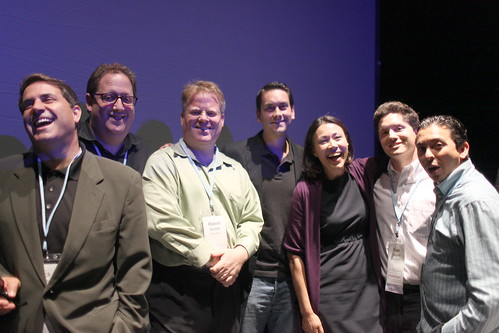
Rick Sanchez, Jeff Pulver, Robert Scoble, Clayton Morris, Ann Curry, Ryan Osborn, Brian Solis
—
Connect with me on:
Twitter, FriendFeed, LinkedIn, Tumblr, Plaxo, Plurk, Identi.ca, BackType, Social Median, or Facebook
—
Kindle users, subscribe to PR 2.0 here.
—
Now available:


—
pr pr+2.0 pr2.0 public+relations marketing advertising interactive social+media socialmedia brian+solis social media media2.0 media+2.0 2.0 smo social+media+optimization marcom communication publicity advertising interactive spin brand branding twitter tweet ecosystem twitterverse
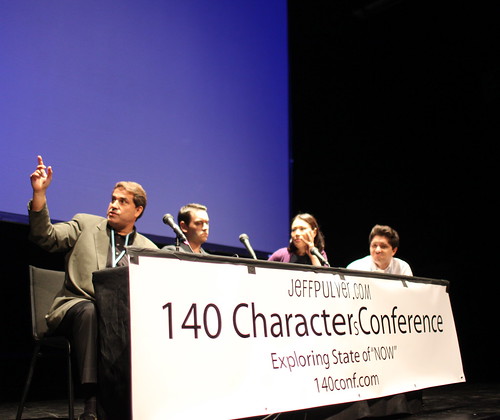
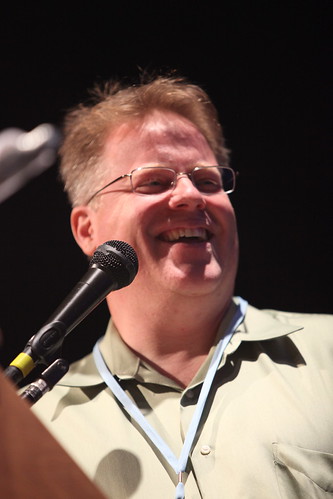





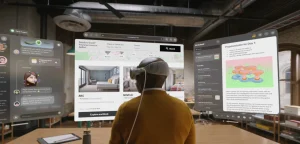

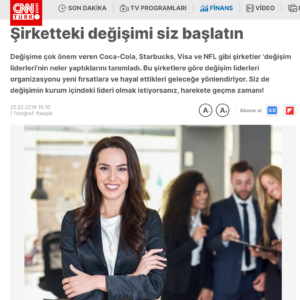


Great article and discussion.
Great article! For those who have missed it, we have been covering the news from Iran since Saturday at http://iran.twazzup.com trying to give the people in Iran a way to tell their story.
would it be TNN or TRN – twitter rumour network? Social media has its own negative effects too! I have been witnessing a change in the way people perceive things and report. these days people seem to be thinking how to tweet than going lil deep and see what is actually happening. right?
I think you are righ with twitter you are not following the news network but news network is following you.Well the next time I visit http://www.twitqa.com/ I would be happy to have TNN live tuned in.
Brian, c’mon … is CNN as far back as the collective memory goes for instantaneous and innovation? I watched Lee Harvey Oswald get gunned down by Jack Ruby on network TV (about as trad media as you can get).
It was instantaneous, it was tramautic for millions already traumatized and it was innovative, live news delivery.
A generation before me, they listened to live radio broadcasts from Edward R. Murrow as London underwent the blitz. Pretty instantaneous, pretty compelling, pretty innovative.
Twitter is what it is and it’s power is the engagement of Web 2.0 … but it’s not the first news platform to have immediate, even instantaneous impact, nor was CNN the first.
There’s no way for a traditionnal media to hire and count on billions of journalists. And, as you wrote : The opportunity for social media and its inherent benefits lies in our ability to build a two-way information bridge between the point of our content introduction, alternative sources for information, and the people looking for insight and direction. To build a community, we have to be an active participate in it. Journalists do not work in this paradigm. It’s another set of mind. Another world. Info by people for people. Congratulations for the coverage of this conference it makes it available to so many people.
Martine Dorval
While there is no doubt that massive changes are being wrought upon media today, I believe there is a very important role for journalists moving forward. Despite all the hype and frothiness surrounding social media and Twitter in particular, they ail from a very high “signal-to-noise” ratio – there is tremendous value in all this connectedness but not all that are contributing are adding value or perspective from a news perspective. Thus, there is a tremendous opportunity for a new wave of journalists who have the ability to not only engage the broader connected community but also add perspective and help us mere mortals separate the “signal” from the “noise.”
http://smokejumping.wordpress.com/2009/06/16/what-i-learned-at-140-the-twitter-conference-round-up/
As written previously the contgent and it’s presentation are just great. Could you share how you planned everything to perform so well ? Great texts, nice pictures and so on. Thanks